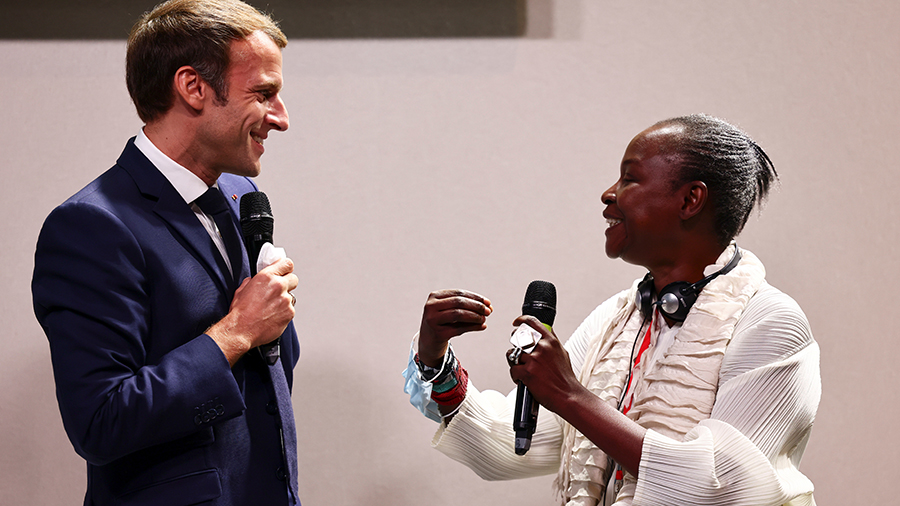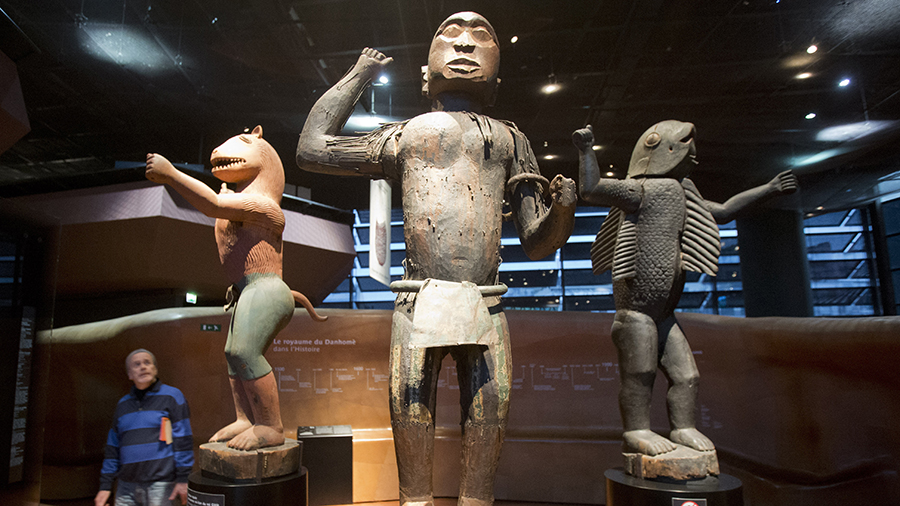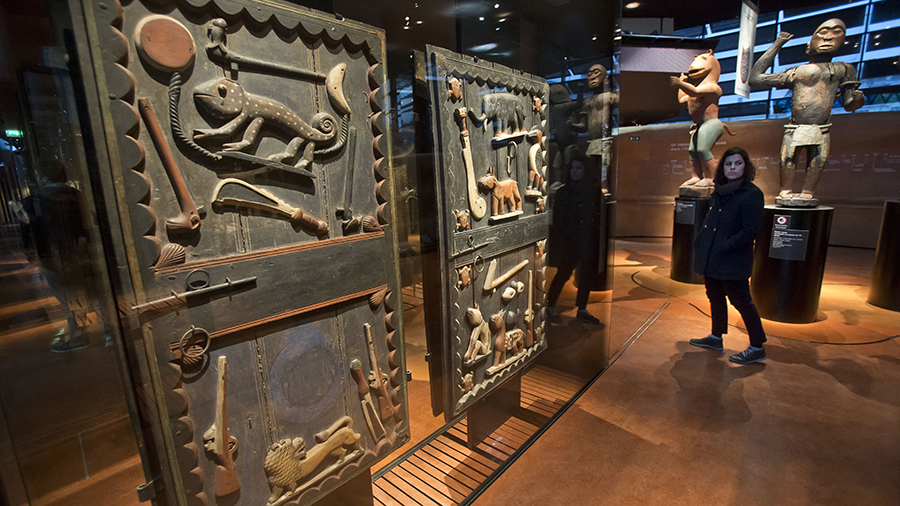
French President Emmanuel Macron and Cameroonian-born curator Koyo Kouoh attended a conference at the New Africa-France 2021 Summit in Montpellier./Reuters/Sarah Meyssonnier/
French President Emmanuel Macron and Cameroonian-born curator Koyo Kouoh attended a conference at the New Africa-France 2021 Summit in Montpellier./Reuters/Sarah Meyssonnier/
Thrones, statues and masks are among the 26 pieces of art and cultural heritage that will be returned to Benin by France before the end of October. The furniture and sculptures were taken from a royal treasury in southern Benin during France's colonial occupation of the West African country in the late 1800s.
In 2018, France's President Emmanuel Macron announced the restitution of the artworks and French lawmakers approved the move in December 2020.
They set a deadline of one year to organize the return to Benin but Macron says it must take place before the end of October, to coincide with the Benin Culture Week being held at the Quai Branly-Jacques Chirac museum in central Paris.
All the Beninese pieces have been on display in the museum's Africa collection.

A visitor looks at wooden royal statues of the Dahomey kingdom, dated 19th century, at Quai Branly museum in Paris, France. France will return 26 African artworks to Benin later this month as part of long-promised efforts to give back artwork taken from Africa during the colonial era. /AP Photo/Michel Euler, File
A visitor looks at wooden royal statues of the Dahomey kingdom, dated 19th century, at Quai Branly museum in Paris, France. France will return 26 African artworks to Benin later this month as part of long-promised efforts to give back artwork taken from Africa during the colonial era. /AP Photo/Michel Euler, File
How did the art end up in France?
As part of its colonial expansion across Africa in the late nineteenth century, France fought and won two wars against modern-day Benin, which at the time was known as the Kingdom of Dahomey.
Under twelve different kings, from 1620 to 1900, the kingdom of Dahomey established itself as one of the most powerful on the western coast of Africa.
During the second Franco-Dahomean War in 1892, the commander of the French forces, General Alfred Dodds, confiscated the 26 artworks as the 'spoils of war.'
What are the artworks?
They include large royal statues, which are a hybrid of humans and animals.
They bear the emblems of the Dahomey royal family: the cardinal with flame-red feathers for King Ghezo, the lion for King Glele, a shark for King Behanzin.
A throne carved from a single block of wood comes from Cana, twenty kilometers from Abomey.
The walls and doors of the palace of Abomey were decorated with allegoric motifs alluding to the great achievements of the kings and historic events.

The doors of the king's palace Gele of the Dahomey kingdom, dated19th century, today's Benin, at Quai Branly museum in Paris, France. /AP Photo/Michel Euler
The doors of the king's palace Gele of the Dahomey kingdom, dated19th century, today's Benin, at Quai Branly museum in Paris, France. /AP Photo/Michel Euler
Benin's UNESCO-listed heritage
The Royal Palaces of Abomey are a UNESCO World Heritage Site. Considered sacred, the city of Abomey was regularly visited by the kings of the dynasty for ceremonies and rituals.
The United Nations cultural agency says that the royal palaces represent "a group of monuments of great historical and cultural value because of the conditions that led to their erection and the events they have witnessed."

